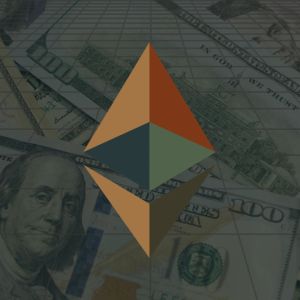Ethereum emerged top of the real-world assets table as the total value of assets under management grew by 10% in the past 30 days to $4.1B. Ethereum’s RWA market share also went up 3.39% to 54.5% as the number of RWA holders in the ecosystem increased 3.05% to 62.28K. RWA.xyz data also revealed that the number of RWA tokens issued on the Ethereum network had increased to 163. According to Christine Kim, the Vice President of Research at Galaxy Digital, 13 of the 20 financial institutions identified as having built crypto-specific infrastructure and applications were issuing RWAs on Ethereum and its L2s. Kim pointed out that more than 50 traditional companies including financial institutions like Deutsche Bank and Paypal and brands like Louis Vuitton and Adidas, were developing crypto-specific applications on Ethereum and its layer two (L2) networks. RWA.xyz data shows that Ethereum was the blockchain of choice for the issuance of tokenized assets with almost four times the total value of RWAs than the next most popular blockchain for RWAs, zkSync ($1.95B). Kim also noted that the types of RWAs issued on Ethereum so far range from money market funds like the Franklin OnChain U.S. Government Money Fund to government bonds issued by the likes of the European Investment Bank. Ethereum controls over half of the RWA market share Ethereum : driving mainstream with NFTs and RWAs #NFTs and #RWAs are emerging as the leading use cases for #Ethereum among traditional companies. On-chain gaming applications built on Ethereum L2s are driving frequent transactions, while rollups enable the creation of… pic.twitter.com/bE1v9Upc0k — Javier Molina (javiermolina.eth) (@Molina_Jorda) February 21, 2025 As per RWA.xyz data, Ethereum controlled 54.5% of RWA market share while zkSync Era was second with 26% market share and $1.95 billion in total value of assets under management. The largest tokenized asset within the Ethereum blockchain as of the time of publication was Tether’s USDT stablecoin with a market share of 58.37%, followed by Circle’s USDC with 29% market share. Kim claimed that the value of RWAs issued on Ethereum alone had quadrupled over the past year. A subset of financial institutions working on RWAs and tokenization within the network were also developing their own stablecoins such as PayPal’s PYUSD. RWAs and stablecoins were crypto-native use cases “finding product market fit” among traditional financial institutions, Kim added. According to Kim, the anticipation of a crypto-friendly regulatory environment in the U.S. was among the factors boosting RWA and stablecoin adoption. Ethereum remained the go-to blockchain for issuing RWAs and stablecoins among traditional finance companies. She also noted that key partnerships and acquisitions established in 2024 were expected to result in new strides of adoption for stablecoins in 2025. The institutional adoption of Ethereum-based RWAs surged as tokenized bonds, real estate, and commodities were increasingly moving on-chain. Competitors in the RWA market lag far behind RWA.xyz data showed that other blockchains played a smaller role in RWA tokenization as zkSync Era’s total RWA value stood at $1.9 billion and Stellar’s total RWA value stood at $405.17 million. Aptos and Polygon had the fourth and fifth-highest total RWA values at $335.5 million and $192.9 million respectively. Further down the list were Avalanche, with a total RWA value of $143.85 million, Solana with $135.75 million, and Arbitrum with $77.47 million. Galaxy’s research reported that Ethereum’s success in RWA tokenization came from its strong smart contract ecosystem, security, and network effects. Institutional adoption of ETH-based RWAs also surged as tokenized bonds, real estate, and commodities were increasingly moving on-chain. Layer 2 networks like zkSync Era further enhanced Ethereum’s scalability, offering lower fees and faster transactions while maintaining security through the base layer. Nick Ducoff, the head of institutional growth at the Solana Foundation, said that Solana was making a strategic push into RWA tokenization with the Securitize integration aiming to provide institutional investors with low-cost, high-speed transactions. He claimed that Securitize’s expansion onto Solana represented another milestone in bringing “institutional-grade financial products on-chain.” Cryptopolitan Academy: FREE Web3 Resume Cheat Sheet - Download Now










